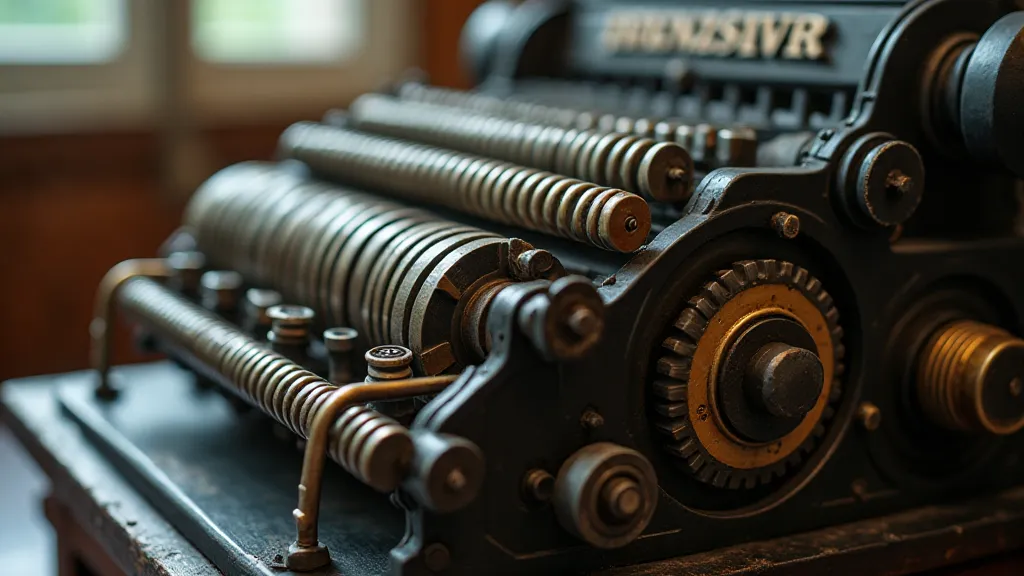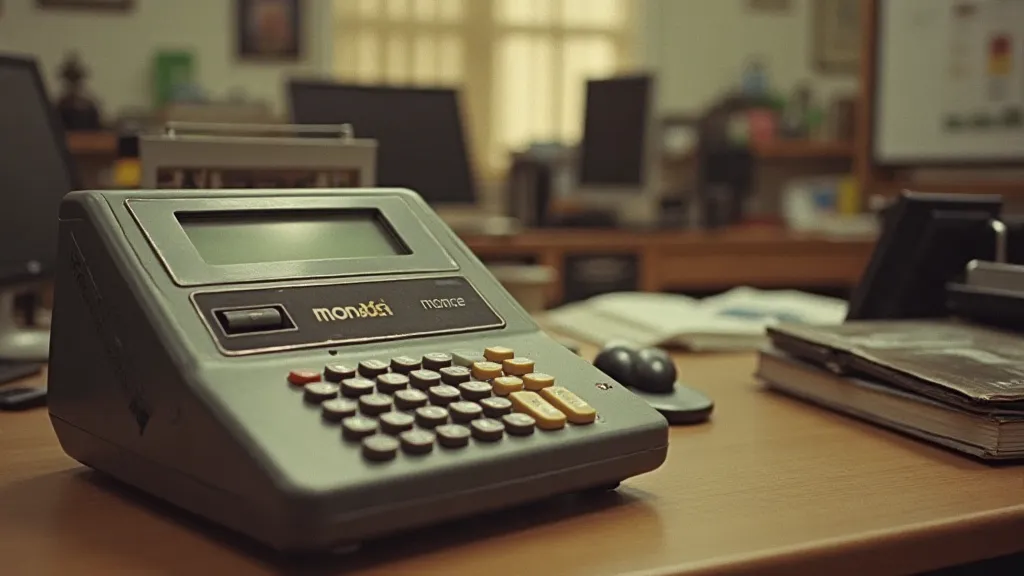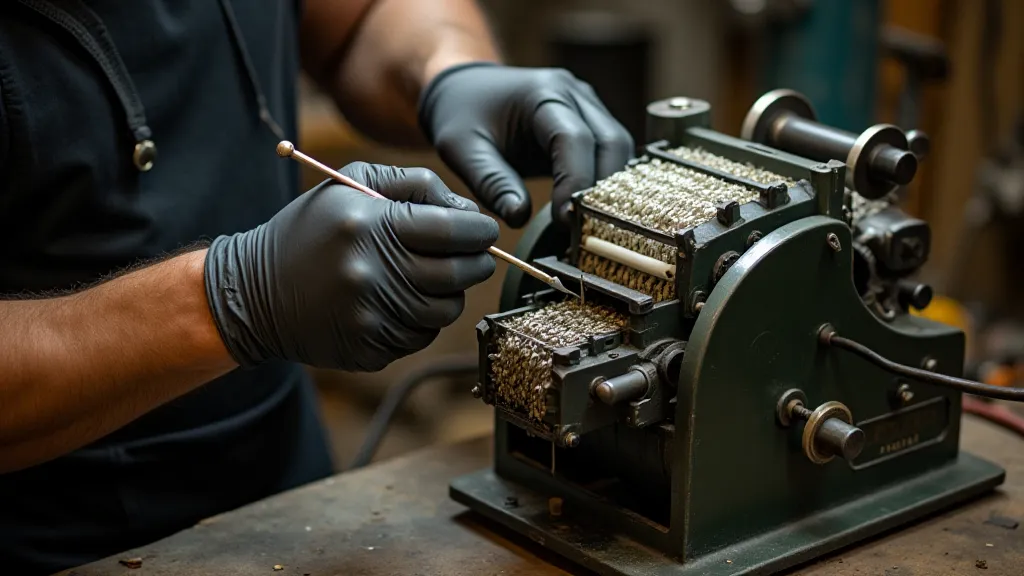The Velvet Glove of Progress: Examining the Transition to Electric Machines
The rhythmic clatter of gears, the satisfying click of a lever – these aren’t just sounds; they’re echoes of a bygone era, a symphony of human ingenuity manifested in the form of antique adding machines. For those of us drawn to these magnificent mechanical devices, they represent more than just calculators; they embody an age of meticulous craftsmanship, of engineers and artisans pouring their expertise into creating tools that, while simple by today's standards, were marvels of their time. And then came electricity. Its arrival wasn't a sudden revolution, but a subtle, relentless pressure, a velvet glove slowly closing around the knuckles of the mechanical world.
I remember the first time I held a Brunsviga, a particularly elegant German adding machine from the 1920s. The weight of it in my hands felt substantial, imbued with a sense of history. Each key was a miniature sculpture, the levers intricately connected, the entire machine a testament to precision engineering. It felt like holding a piece of art, a relic of an era where things were built to last, to be appreciated, not simply discarded for the next technological fad. It’s a feeling hard to replicate when pressing a button on a sleek, silent electronic device.

The Reign of the Mechanical: An Era of Precision
Prior to the widespread adoption of electric calculators, adding machines were the backbone of business. From small shops to sprawling factories, these mechanical marvels diligently tallied accounts, processed payrolls, and managed inventories. Names like Curta, Monroe, Brunsviga, Friden, and Marchant became synonymous with reliability and accuracy. Each company developed its own distinctive designs, resulting in a fascinating variety of mechanical approaches – pinwheel mechanisms, stepped drums, reciprocating levers – each offering a unique experience for the operator.
The appeal wasn’s solely about speed, although mechanical machines did evolve to become remarkably efficient. It was about the tactile experience, the connection to the process. Operating a mechanical adding machine demanded a degree of concentration and skill. It wasn't just about pressing buttons; it was about understanding the machine, anticipating its movements, and troubleshooting minor issues. These machines were often cared for and maintained by dedicated "keypunch operators," individuals who possessed a quiet pride in their craft. They were vital members of the workforce, keepers of essential business data.
The late 19th and early 20th centuries saw rapid innovation in adding machine design. Companies competed fiercely, constantly striving to improve accuracy, speed, and ease of use. This competition led to elegant solutions for repetitive calculations, significantly boosting productivity in a world increasingly reliant on quantifiable data. The meticulous design principles inherent in these machines – the careful selection of materials, the precise machining of components – laid the foundation for future engineering advancements.
The Electric Intrusion: A Gradual Shift
The introduction of electric adding machines, and later, electronic calculators, wasn't a sudden overthrow of the mechanical order. It was a more nuanced process, driven by a combination of technological advancements and evolving economic realities. The first electric adding machines, appearing in the 1930s and 1940s, retained much of the functionality and aesthetic of their mechanical counterparts. They simply used electric motors to automate some of the more repetitive tasks, reducing operator fatigue and increasing speed. However, they still employed a significant number of mechanical components.
The true game-changer arrived with the development of transistors and integrated circuits in the 1960s and 1970s. Electronic calculators became smaller, cheaper, and significantly faster than even the most advanced electric adding machines. The shift was further accelerated by the declining cost of electronics manufacturing and the growing demand for portable computing devices. Businesses began to realize that the initial investment in electronic calculators would be offset by increased productivity and reduced maintenance costs. The gradual obsolescence of the mechanical age was underway.

Economic and Social Factors: Beyond the Technology
The transition wasn't solely about the superiority of electric calculators. Social and economic factors played a significant role. The rise of corporate bureaucracy and the increasing emphasis on standardization favored electronic devices, which could be mass-produced and easily deployed across large organizations. The skills required to operate and maintain mechanical machines were gradually disappearing as younger generations grew up with a different technological landscape.
There was also a psychological aspect to consider. Many operators found the cold, impersonal efficiency of electronic devices unsettling. The loss of the tactile connection to the work, the absence of the satisfying rhythm of the mechanical process, contributed to a sense of disconnect. The artistry, the craftsmanship, the quiet pride in maintaining these intricate machines – all slowly faded from the workplace.
Preserving the Legacy: Restoration and Appreciation
Today, antique adding machines are increasingly valued as historical artifacts and collectors' items. Their intricate mechanisms, elegant designs, and the stories they represent offer a glimpse into a bygone era. Restoring these machines is a labor of love, requiring patience, mechanical aptitude, and a deep appreciation for the ingenuity of the engineers who created them.
The restoration process often involves disassembling the machine, cleaning and lubricating its components, replacing worn parts, and carefully reassembling it. It’s a process that demands a thorough understanding of mechanical principles and a respect for the original design. Successfully restoring a vintage adding machine isn’t just about making it functional; it’s about preserving a piece of history.

A Silent Requiem for an Era
The story of the transition from mechanical to electric adding machines is more than just a technological narrative. It’s a poignant reminder of the inevitable march of progress and the subtle erosion of traditional skills and craftsmanship. While electric calculators undoubtedly offer greater speed and convenience, there’s something undeniably special about the quiet dignity and mechanical beauty of a well-maintained antique adding machine. They serve as tangible links to a time when things were built to last, when human ingenuity and artistry were valued, and when the rhythm of calculation echoed with the heart of the workplace. They’re a silent requiem for an era, but also a testament to the enduring appeal of mechanical elegance and human connection – a velvet glove slowly withdrawing, revealing the legacy beneath.





